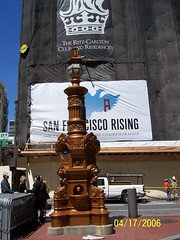The quake surprised us Californians who are accustomed to thinking of earthquakes as a problem confined to the Pacific rim. However, the Midwest experienced large temblors in the 19th century, and the U.S. Geological Survey believes that there is a significant probability one of magnitude 6.0 or greater will strike again in the region in the next half-century.
The prevailing theory is that a remnant of the Farallon plate that slid (subducted) under the North American plate millions of years ago off the North American west coast is the source of the earth’s stresses. (Another California connection: the plate is named after the Farallon Islands that sit outside the Golden Gate.)

Earthquake risk map from USGS.
Although the focus has been on California because of its population density and share of the nation’s economy, an earthquake in the Mississippi Valley is something to worry about:Unique geology in the Midwest increases the shaking intensity of earthquakes because seismic energy moves through the dense bedrock at very high speeds, then becomes trapped in soft sediments filling river channels and valleys, [Missouri University scientist David] Rogers said.
Rogers and some of his graduate students have been modeling synthetic seismic events in the New Madrid region. Most of their scenarios are modeled after an 1895 earthquake with a magnitude of 6.4 that was centered in Charleston, Mo.
The preliminary results are sobering, said Rogers. Data indicates ground shaking would be magnified about 600 percent within the flood plain of the Missouri River, a development that would cause most of Missouri’s existing long-span bridges to collapse.
"You don't even need a really big earthquake to do significant damage in Missouri," Rogers says. "It could happen tomorrow."

No comments:
Post a Comment